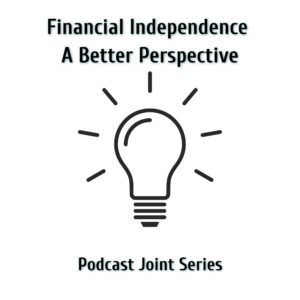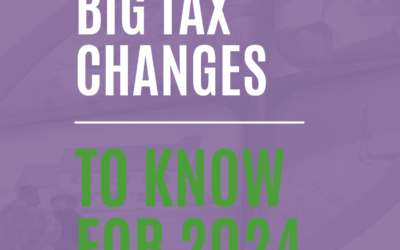Financial Independence
A Better Perspective
Podcast
Episode 9
EPISODE 9 – Life Insurance: Is It a Miracle, Misunderstood, or Simply a Monster?
Presented by Lance Edwards and Randy Luebke
In this episode of “Financial Independence – A Better Perspective”, Lance and Randy look at life insurance from a birds-eye view and discuss the differences between term life insurance, permanent life insurance, and the value of universal life insurance as well.
View Podcast Below…
What you’ll learn in this episode:
- Term life insurance is for a specific period of time – which can be 10, 20, 30 even 40 years. Permanent, as the name implies, is for the rest of your life.
- In the insurance industry, term is also called “pure insurance.” It is the most efficient and affordable way to buy life insurance. It is calculated based on your health today, your age, where you live and what you do for a living. It won’t vary much between companies, and is considered a real commodity. Items to consider when taking out a term policy – the costs (premium) and the company that is issuing it. You want a company that will back it up in cases you passed away. Term insurance is typically the idea of paying the least amount of premium to leverage that money to get the greatest death benefit.
- One of the reasons term insurance is so affordable is that 98% of those policies will never pay a death benefit. People are living out the terms of the policy. Many of the term policies we see today come along with a 401k plan. It provides peace of mind by providing for your family for years in case something happens to you – and would be enough to fund a college education for your children.
- Lance mentions that when he’s raising private money from individual investors, he gets a key man life insurance term policy. If there’s enough coverage to hire a replacement, a senior person to come in and finish the project up, it’s a protection mechanism for his investors.
- The life insurance concept was started by a religious group that wanted to insure the ministers so that if that person died, his spouse wouldn’t be destitute. Over time, the payment would be level. But over time, the amount of the death benefit would decline.
- Many companies offer the same $9.99 monthly premium for people whether they’re 45 or 70. The actuaries developed strategies where they realized that if they take more than they need today, based on current life expectancy, they could take that money, invest it and set it aside and let it grow. If they did that for enough people, they could ensure that the premium would never change over the life of the insured. That’s how whole life came about. All insurance has an investment component. Companies can invest their excess money in property, commercial real estate developments and apartments, among other things.
- Randy explains how whole insurance works: “If you peel back the onion on these policies, even though there are many sub-categories inside of it, basically, it’s a pretty low rate of return, maybe 2-4 percent interest. But everything inside of that policy is guaranteed and that’s what people are attracted to. The death benefit and the fixed premium are guaranteed.”
- In the 70s, the insurance industry introduced the universal life product. The idea was to take the efficiency of a term insurance policy – meaning it’s always the cheapest cost of insurance at any point in a person’s life – and roll it inside a permanent life insurance chassis. Universal Life is a term policy that will be around your entire life. The cost goes up every year because there’s term insurance inside that policy. Over time, the amount of insurance risk that the insurance company is retaining is getting smaller. So even though the cost of the insurance goes up as you get older, the amount you’re actually buying, or paying for with the insurance company, is getting smaller.
- Some of the “sexier” parts of Universal Life are the tax benefits which can be used as a retirement income vehicle, and the ability to earn your income tax-free and take your money back out tax free.
- If money is put in correctly, there are strict guidelines for withdrawal. We want to make sure we don’t create what’s called a Modified Endownment Contract (MEC) if we want to take the money out while we’re alive. The MEC says that you put in so much money into the policy so fast, we can’t allow you access to it tax free while you’re alive. When you die, the death benefit is paid tax free to your heirs.
- The IRS crated three laws – TEFRA, DEFRA and TAMRA, which limit the money anybody can put in. You have to have a corridor of insurance: have enough risk in the policy to make it really insurance. A million-dollar policy with $950,000 dumped in on day one isn’t a lot of risk. The corridor is the amount you can put in and the speed by which you do that.
- Randy pops holes in the idea of using a Universal Life Policy as a college savings account. He criticizes insurance agents who use it as a college planning tool, and thinks life insurance should be purchased for the right reasons. His favorite way of saving for college is buying real estate and owning rental properties.
For more information and guidance on how to start a financial plan, check out Financial Independent Toolkit (FIT) and 9 to Know.

Big Tax Changes to Know for 2024
Financial Guides2024 has brought some big tax changes with it. It’s essential to stay informed about these...
The Smart Tax Planning Newsletter March 2024
Tax PlanningIn This Issue: IRAs for Young Adults Get Up to $32,220 in Sick and Family Leave Tax Credits New Crypto Tax...
2024 Key Planning & Investment Deadlines for Q2
Financial GuidesSpring is coming and to keep you financially organized for Q2, we are providing you with our Spring...






